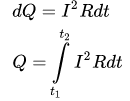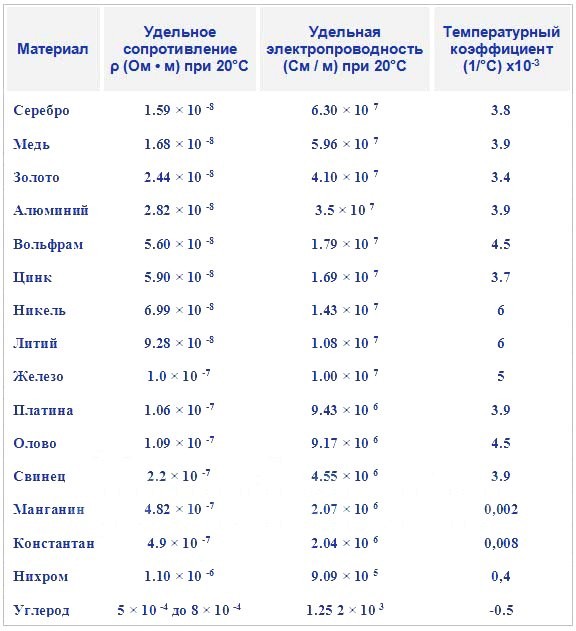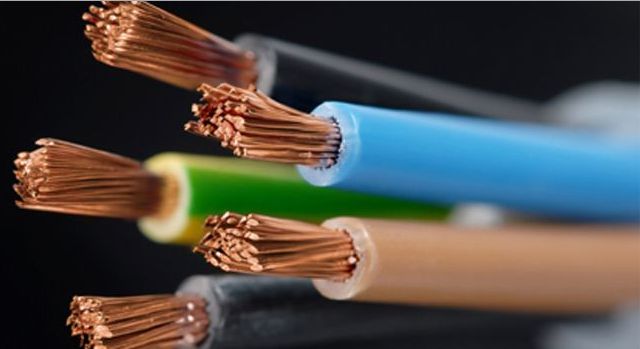Categories: Featured Articles » Electrician at home
Number of views: 31477
Comments on the article: 0
Cross-sectional area of wires and cables, depending on the current strength, calculation of the required cable cross-section
To repair the old wiring or laying a new one, you need to select the cable of the desired cross section in order to withstand the expected load.
If the old wiring is out of order you need to replace it, but before changing it to a similar one, find out why there was a problem with the old one. It is possible that there was simply mechanical damage, or the insulation became unusable, and an even more significant problem is the failure of the wiring due to exceeding the permissible load.

What is the difference between cable products, what are the main characteristics?
To begin with, it is determined what voltage in the network in which the cables will work. For household networks, cables and wires of the VVG, PUGNP type are often used (only it is forbidden by modern PUE requirements due to the large tolerances for the cross section during production, up to 30%, and the permissible insulating layer thickness is 0.3 mm, against 0.4 in PUE), ШВВП and others .
If you move away from the definitions, the wire from the cable differs minimally, mainly by definition in GOST or TU by which it is made. After all, there are a large number of wires on the market with 2-3 wires and two layers of insulation, for example, the same PUGNP or PUNP.
Allowable voltage is determined by cable insulation
To select a cable, in addition to voltage, the conditions under which it will work are taken into account, for connecting a moving tool and equipment it must be flexible, for connecting fixed elements, in principle, it doesn’t matter, but it is better to prefer a cable with a monolithic core.
The decisive factor when buying is the cross-sectional area of the core, it is measured in mm2, the ability of the conductor to withstand a long load depends on it.
What affects the permissible current through the cable?
First, let's turn to the basics of physics. There is such a Joule-Lenz law, it was discovered independently by two scholars, James Joule (in 1841) and Emilius Lenz (in 1842), and therefore received a double name. So this law quantitatively describes the thermal effect of the electric current flowing through the conductor.
If expressed in terms of current density, we get the following formula:

Interpretation: w is the heat release power per unit volume, vector j is the current density through the conductor is measured in Amperes per mm2. For copper wire, take from 6 to 10 A per millimeter of area, where 6 is the working density, and 10 is short-term. vector E is the electric field strength. σ is the conductivity of the medium.
Since the conductivity is inversely proportional to the resistance: σ = 1 / R
If the Joule-Lenz law is expressed in terms of the amount of heat in integral form, then:


Thus, dQ is the amount of heat that will be released during the time interval dt in the circuit where current I flows through a conductor of resistance R.
That is, the amount of heat is directly proportional to the current and resistance. The greater the current and resistance, the more heat is generated. This is dangerous because at a certain moment the amount of heat reaches such a value that the insulation melts on the wires. You may have noticed that the wires of cheap boilers noticeably warm during operation, this is it.
If power is released on the cable, then the voltage at its ends connected to the load also drops.
In calculators for calculating cable cross-sections, the following parameters are usually set:
-
current or load power;
-
line length;
-
allowable voltage drop (usually in percent);
The greater the resistance, the more the voltage drops and the cable heats up, because power will be released on it (P = UI, where U is the voltage drop across the cable, I is the current flowing through it).
All calculations were reduced to current and resistance. The resistance of the conductor is calculated by the formula:

Here: ρ (po) is the resistivity, l is the cable length, S is the cross-sectional area.
The resistivity depends on the structure of the metal, the values of resistivities can be determined from the table.

The wiring mainly uses aluminum and copper. In copper, the resistance is 1.68 * 10-8 Ohm * mm2 / m, and in aluminum 1.8 times greater than in copper, it is 2.82 * 10-8 Ohm * mm2 / m. This means that the aluminum wire heats up almost 2 times stronger than the copper wire with the same cross section and current. It follows that for wiring, you will have to buy a thicker aluminum wire, in addition, the wires are easily damaged.
Therefore, copper wires were replaced by copper wires from the home wiring, and the use of aluminum in the wiring is prohibited, only the use of aluminum cables for the installation of very powerful electrical installations that consume high current is allowed, then use an aluminum wire with a cross section of more than 16 mm2 (see -Why aluminum cable cannot be used in wiring)
How to determine the resistance of the wire by the diameter of the core?
There are cases when the cross-sectional area of the core is not known, so it can be calculated by diameter. To determine the diameter of a monolithic vein, you can use a caliper, if it is not, then take a rod, for example a ballpoint pen or nail, wind 10 turns of wire tightly around it, and measure the length of the resulting spiral with a ruler, dividing this length by 10 - you will get the diameter of the vein.

To determine the total diameter of a multi-wire core, measure the diameter of each core and multiply by their number.

Next, consider the cross section according to this formula:

And again they return to this formula for calculating the resistance of a wire:

How to determine the required cross-sectional area of the wire?
The simplest option is to determine the cross-sectional area of the cores according to the table. It is suitable for calculating not too long lines laid under normal conditions (with normal ambient temperature). You can also choose a wire for the extension cord. Please note that the table shows the cross sections for a certain current and power in a single-phase and three-phase network for aluminum and copper.

When calculating long lines (more than 10 meters), it is better not to use such a table. It is necessary to carry out calculations. The fastest way to use the calculator. The calculation algorithm is as follows:
They take allowable voltage losses (not more than 5%), this means that with a voltage of 220V and an acceptable voltage loss of 5% on the cable, the voltage drop (from end to end) should not exceed:
5% * 220 = 11V.
Now, knowing the current that will flow, we can calculate the cable resistance. In a two-wire line, the resistance is multiplied by 2, since the current flows through two wires, with a line length of 10 m, the total length of the conductors is 20 m.
From here, according to the above formulas, the required cable cross-section is calculated.
You can do this automatically from your smartphone, using the Mobile Electric and electroDroid applications. Only the calculator does not specify the total length of the wires, but rather the length of the line from the power source to the electricity receiver.
Conclusion
Correctly calculated wiring is already a 50% guarantee of its successful functioning, the second half depends on the correct installation. All wiring specifics, maximum power consumption by all consumers should be considered. At the same time, enter a margin of permissible current of 20-40% "just in case".
See also at bgv.electricianexp.com
:
